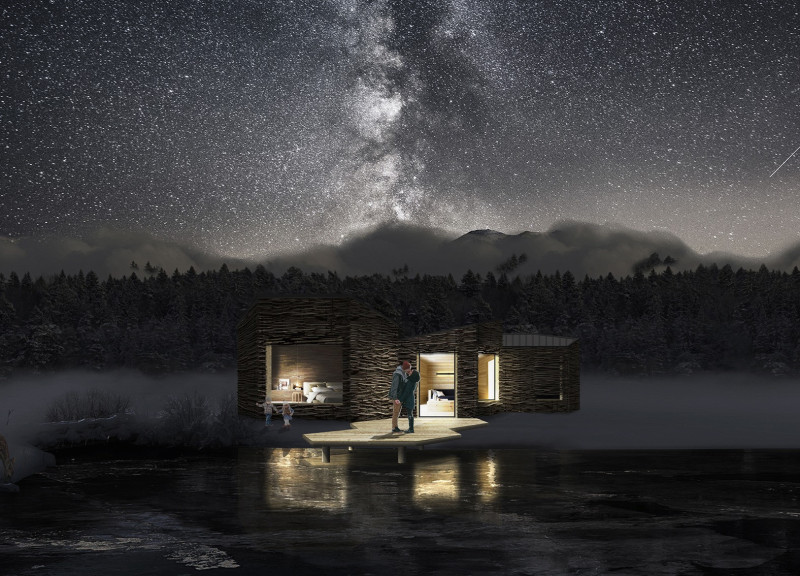5 key facts about this project
At its core, the Blue Clay Country Spa Village functions as a wellness destination, providing spaces for relaxation, healing, and communal experiences. The design features various modules that serve distinct purposes, including a spa, guest accommodations, and communal dining facilities. These spaces are interconnected through landscaped pathways, encouraging exploration and interaction while promoting a sense of community among visitors.
The architectural design is characterized by its modular hexagonal configuration, which echoes natural forms found in honeycombs. This design choice not only optimizes spatial efficiency but also allows for flexibility in the layout. Each hexagon can serve different functions, accommodating the varying needs of guests and staff. The modules are situated strategically to capitalize on the site’s unique topography and views, effectively blending built and natural environments.
A significant aspect of the project is its materiality. The use of locally sourced materials, such as wood and birch panels, reflects the regional identity and enhances the aesthetic appeal of the structures. Wood serves as the primary material, providing warmth and a tactile quality to the interiors, while large glass elements create transparency, inviting natural light into the interiors and connecting indoor spaces with the outside world. Polystyrene panels contribute to the energy efficiency of the buildings, ensuring a comfortable indoor climate. Galvanized steel is used in structural components, offering durability and a modern contrast to the organic materials. Furthermore, the incorporation of photovoltaic panels showcases a commitment to renewable energy and sustainability, powering the facilities with clean energy.
The layout of the Blue Clay Country Spa Village fosters movement and interaction among guests. Thoughtfully designed pathways lead visitors through gardens featuring native plant species, water features, and communal spaces, enhancing the overall experience. The spa module is a focal point, integrating therapeutic water elements that support relaxation and wellness. Additionally, communal areas are designed to encourage social gatherings, celebrating the essence of community living.
One of the unique design approaches employed in this project is the emphasis on environmental sustainability. Each building is designed to operate independently in terms of its energy and heating needs, utilizing strategies such as rainwater collection and natural ventilation to minimize its ecological footprint. This focus on sustainability underscores a growing recognition within architecture of the importance of ecological awareness and social responsibility.
Unique to the Blue Clay Country Spa Village is not just the intention to foster well-being through architecture but also to promote a lifestyle that prioritizes a connection to nature and community. By employing a design that is both practical and aesthetically pleasing, the project successfully elevates the experience of wellness tourism in a natural setting.
For a more comprehensive understanding of the Blue Clay Country Spa Village, readers are encouraged to explore the project's presentation, which includes detailed architectural plans, sections, and designs that illustrate the innovative ideas behind this meaningful architectural endeavor. Engaging with these elements will provide deeper insights into the project and its aspirations.


























